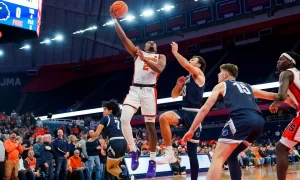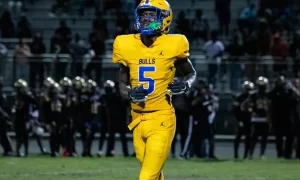The landscape of college sports is constantly evolving, requiring a deep understanding of team structures and strategic adaptability. Advanced predictive models have emerged as essential tools, offering insights into team dynamics that were previously unattainable.
In the fast-paced world of sports, these data-driven approaches are becoming increasingly important for analyzing how teams evolve over time. Drawing inspiration from professional leagues and platforms offering predictions—such as nba computer picks —analysts and fans alike are turning to predictive models for a clearer understanding of team compositions and potential outcomes. This enhances both decision-making processes and fan engagement.
The Transfer Portal’s Influence
The transfer portal is significantly transforming the composition of college sports teams. It allows athletes greater freedom to change schools, leading to dynamic shifts in team rosters each season. As a result, the ability to anticipate player movements and adjust team strategies has become vital.
Analytical tools are being used to predict these changes with growing effectiveness. By integrating data from various sources, predictive models provide glimpses into future team structures, helping programs make more informed decisions. These tools also support the evaluation of player performance and compatibility with new teams, thereby influencing recruitment and roster management strategies.
The impact of the transfer portal extends beyond individual teams. It challenges traditional recruitment norms and compels institutions to remain agile in response to shifting dynamics. Predictive modeling supports this transition by offering timely insights, giving programs a competitive edge in a highly fluid environment.
Comparative Analysis of Predictive Methodologies
Across different levels of sport, predictive models are being used to inform strategic decisions. These models often rely on statistical analysis and historical performance to generate projections about player performance and match outcomes. As similar approaches are adopted in college athletics, teams can refine their rosters with greater precision.
One key strength of these models is their ability to process large datasets quickly, delivering actionable insights for coaching staff and management. This shift toward technologically informed decision-making mirrors trends seen in professional sports, where analytics are a cornerstone of team development.
Moreover, predictive models contribute to fan engagement by providing data-backed insights and forecasts. As these tools become more mainstream, they enable fans to engage more deeply with the sport, encouraging broader interest and discussion.
Enhancing Fan Engagement Through Data
Understanding data-driven changes in team rosters enhances fan engagement by illuminating the strategies behind team building. Fans who comprehend these developments are better positioned to appreciate the complexities involved in maintaining competitiveness.
The integration of analytics into sports commentary and media content allows fans to become more than just spectators. With access to detailed insights, supporters can take a more active role in discussions about team strategy and potential outcomes, enriching the overall viewing experience.
This trend toward informed fandom represents a significant evolution in how sports are consumed. Fans are increasingly engaging with content on a deeper level, and the availability of predictive tools only strengthens this relationship.
Broader Implications for College Programs
As predictive analytics become more common in college sports, programs across the country are exploring how to incorporate these models into their strategies. The benefits include improved roster planning, better recruitment outcomes, and the ability to adapt quickly to changes in the competitive landscape.
While specific examples may vary, many institutions are assessing the value of analytics to maintain or enhance their performance. This broader shift suggests a growing recognition of the role technology plays in shaping modern sports strategies.
The continuous development of these methodologies points toward exciting opportunities for teams willing to embrace data-driven decision-making. Over time, programs that effectively integrate predictive modeling may find themselves better positioned to succeed in an increasingly competitive field.


















